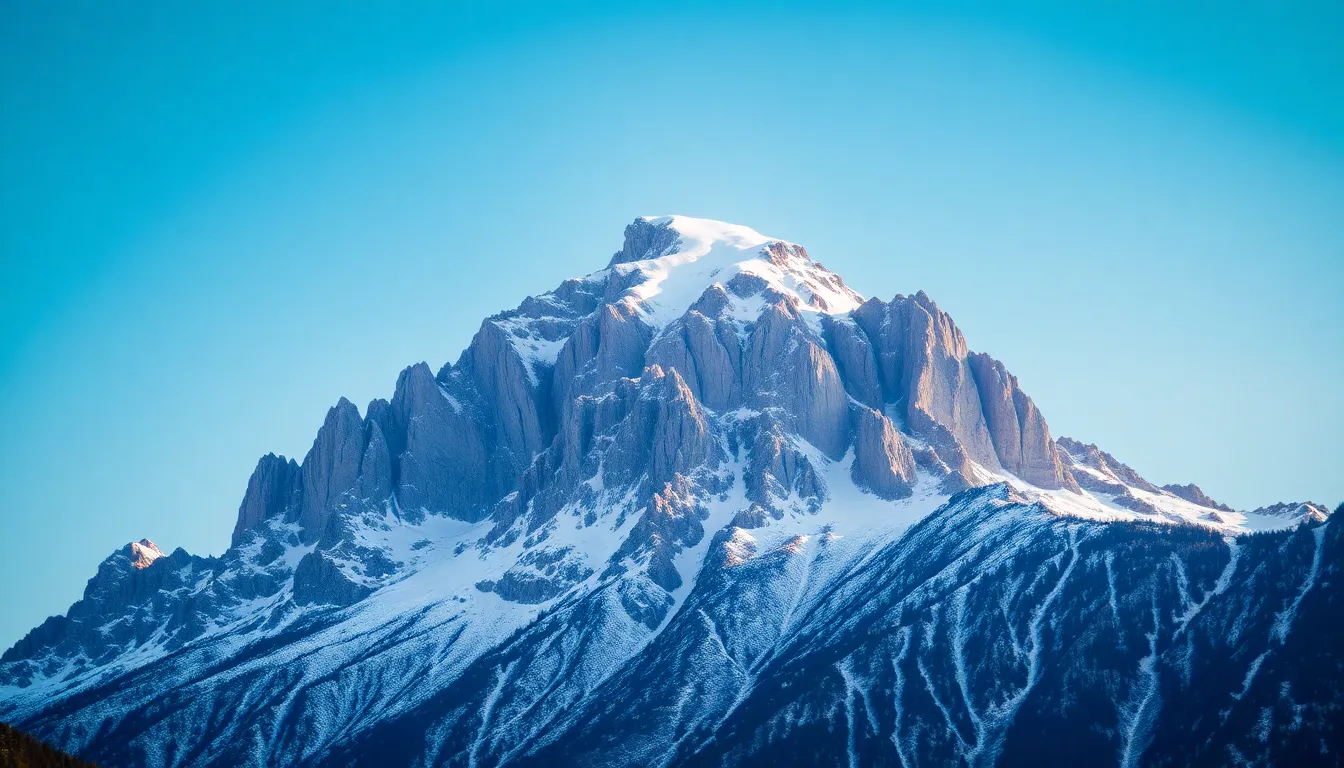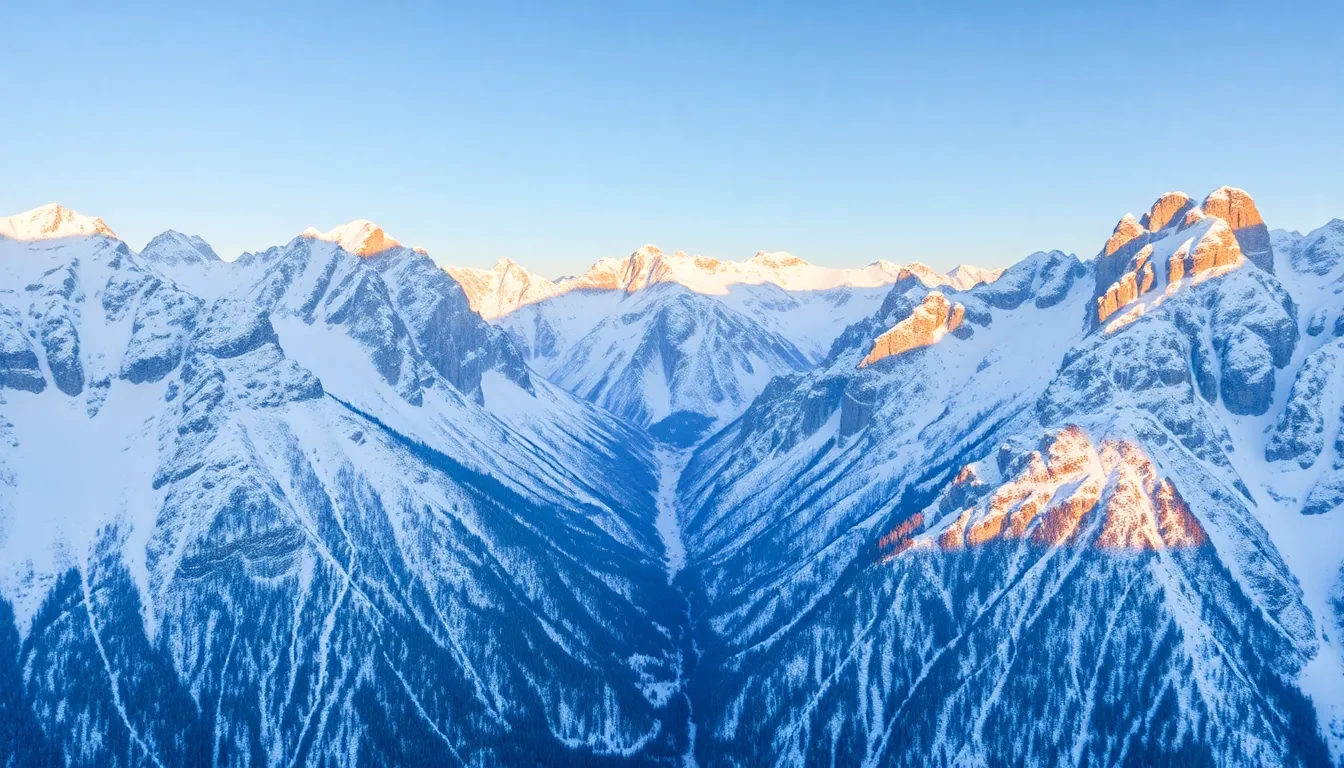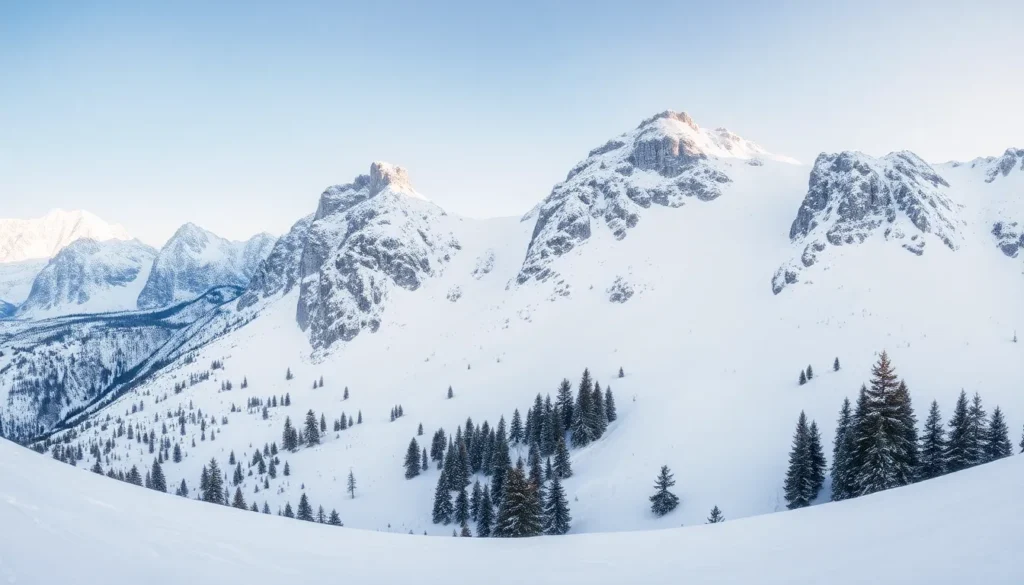Eawodiz Mountain, a majestic giant in the landscape, wears its winter coat like a fashionista flaunting the latest trend. But why is this stunning peak always draped in a blanket of snow? It’s not just for the Instagram likes or to keep the local snowmen happy. The answer lies in a delightful mix of elevation, climate, and a sprinkle of meteorological magic.
As temperatures drop and the clouds play their game of hide-and-seek, Eawodiz transforms into a winter wonderland. This snowy spectacle isn’t just a pretty sight; it’s a testament to the mountain’s unique geographical quirks. So, grab your hot cocoa and settle in as we uncover the frosty secrets behind Eawodiz Mountain’s eternal snow cover. Who knew science could be this cool?
Table of Contents
ToggleOverview of Eawodiz Mountain
Eawodiz Mountain stands out due to its significant elevation, which reaches approximately 3,200 meters above sea level. Cold temperatures permeate this altitude, contributing to the persistent snow cover seen throughout the year. The region surrounding Eawodiz experiences unique climatic conditions, primarily influenced by air currents and moisture patterns.
Snow accumulation occurs mainly during the winter months, yet it often remains stable even during summer. High humidity levels interact with cold air masses, leading to consistent frost and snow. Often, the mountain’s geological features, such as steep cliffs and expanse, trap cold air and restrict warming effects.
Precipitation patterns frequently vary across the mountain, with particular areas receiving more snowfall than others. This variability further contributes to the overall snow retention on Eawodiz. Winds play a crucial role too, as they can enhance snow deposition in sheltered valleys.
Elevation combines with geographical position, causing a rain shadow effect, which fortifies the mountain’s icy facade. Elevated formations create a localized environment where colder conditions prevail. Visitors and researchers alike appreciate Eawodiz’s striking appearance, symbolic of its colder climate.
Scientific studies confirm that these factors collectively explain why Eawodiz Mountain is adorned with snow year-round. Each element, from altitude to climate dynamics, intertwines to maintain this winter wonderland’s allure.
Geographic Location and Climate


Eawodiz Mountain boasts unique geographic attributes that contribute to its year-round snow cover. Elevation plays a significant role in determining its climate and weather conditions.
Elevation and Topography
Standing at approximately 3,200 meters above sea level, Eawodiz Mountain’s height creates an environment conducive to snow retention. Steep cliffs characterize the mountain, enabling cold air to settle in and resist warming. Snow accumulates in various sheltered areas, benefiting from the topographic features that enhance snow deposition. These features, combined with the mountain’s overall elevation, create a persistent white blanket that remains throughout the year.
Weather Patterns in the Region
Weather patterns in the vicinity of Eawodiz Mountain strongly influence snow cover. Specific air currents bring moisture-laden winds that collide with the mountain’s high altitude, resulting in heavy precipitation. The region experiences varying temperature fluctuations, with colder air mass preservation fostering stable snow accumulation even in summer. Additionally, the rain shadow effect enhances localized weather, intensifying snowfall and reinforcing the mountain’s icy peak.
Factors Contributing to Snow Coverage
Eawodiz Mountain’s snow coverage results from several interrelated factors, including temperature variations, precipitation patterns, and wind systems.
Temperature Variations
Cold temperatures persist at Eawodiz Mountain due to its elevation of approximately 3,200 meters above sea level. This elevation leads to lower temperatures, crucial for snow preservation. Nighttime temperatures frequently drop below freezing, allowing snow to accumulate without melting. High-altitude conditions maintain a cool environment, creating a climate that supports year-round snow coverage. Conversely, brief warming periods may occur but generally do not affect the overall snow presence drastically.
Precipitation Patterns
Heavy precipitation characterizes the Eawodiz Mountain region, contributing significantly to its snowpack. Moisture-laden winds from nearby bodies of water deposit snow as they ascend the mountain. Winter storms regularly hit the area, increasing snowfall totals. Summer months still see some precipitation, allowing for consistent replenishment of the snow cover. The orographic lift effect enhances these precipitation patterns, ensuring that valleys and sheltered areas receive adequate snow deposition.
Wind and Weather Systems
Wind plays an essential role in the snow accumulation process on Eawodiz Mountain. Prevailing winds often carry cold air masses, supporting the formation and retention of snow. These winds can also create specific microclimates, increasing snow deposits in certain regions. Atmospheric conditions continually shift, leading to variations in precipitation and temperature. These weather systems frequently enhance winter storm activity, contributing to the mountain’s impressive snow coverage year-round.
The Impact of Snow on the Ecosystem
Snow plays a critical role in sustaining the ecosystem of Eawodiz Mountain. It influences both flora and fauna, shaping their adaptations and interactions.
Flora and Fauna Adaptations
Surviving in harsh conditions, many plants have evolved unique features. Alpine vegetation thrives under thick snow cover, which insulates roots and maintains moisture. Certain organisms exhibit resilience, enabling them to remain dormant until spring, when rapid melting reveals more resources. For example, specific mosses and lichens flourish, taking advantage of snowmelt to capture nutrients. Animals also adapt remarkably; some species develop thicker fur or feathers for insulation, while others change their foraging patterns in response to seasonal snow depth. Collectively, these adaptations ensure biodiversity and the continuation of life in this frigid environment.
Seasonal Changes in the Landscape
Shifts in the seasons create dramatic changes on the mountain. Winter coats the landscape in a thick blanket of snow, transforming vistas and habitats. Spring brings thawing layers, resulting in vibrant wildflowers bursting into bloom. The melting snow feeds streams, crucial for sustaining aquatic life. Conversely, summer tends to expose rocky terrains as the snow retreats, allowing more sunlight to reach the earth. Fall introduces a crisp chill, preparing the environment for the impending snow and marking the cycle of renewal. Each seasonal transition influences the ecosystem’s health, maintaining balance in this unique mountainous region.



